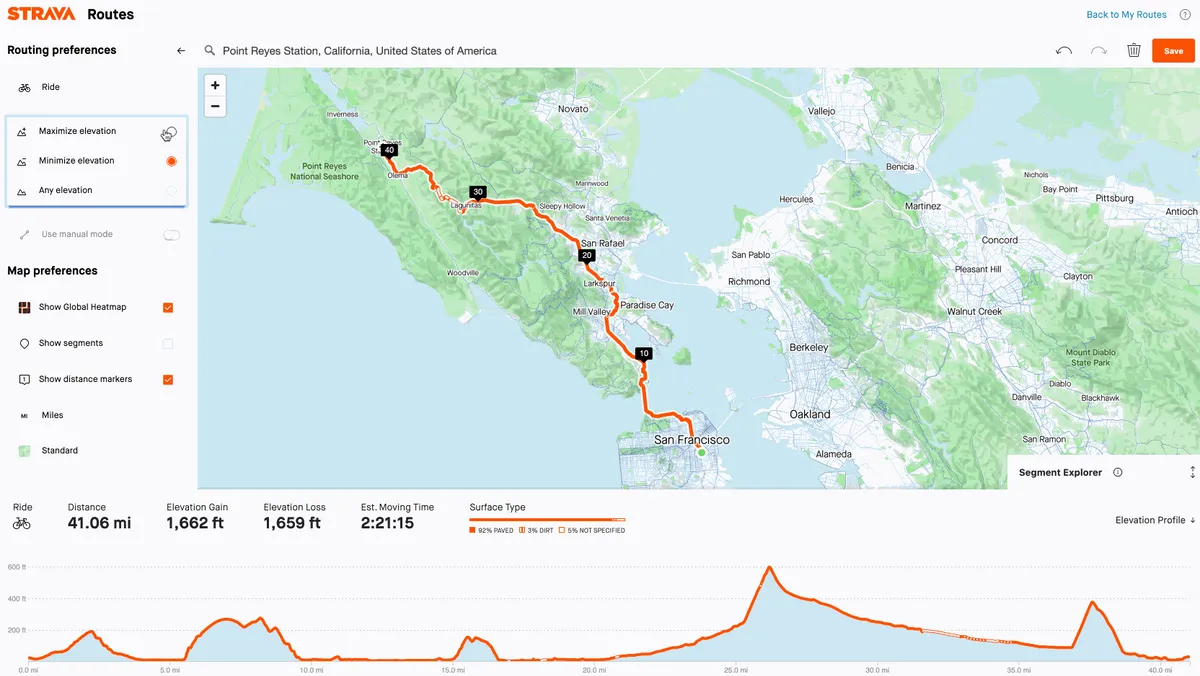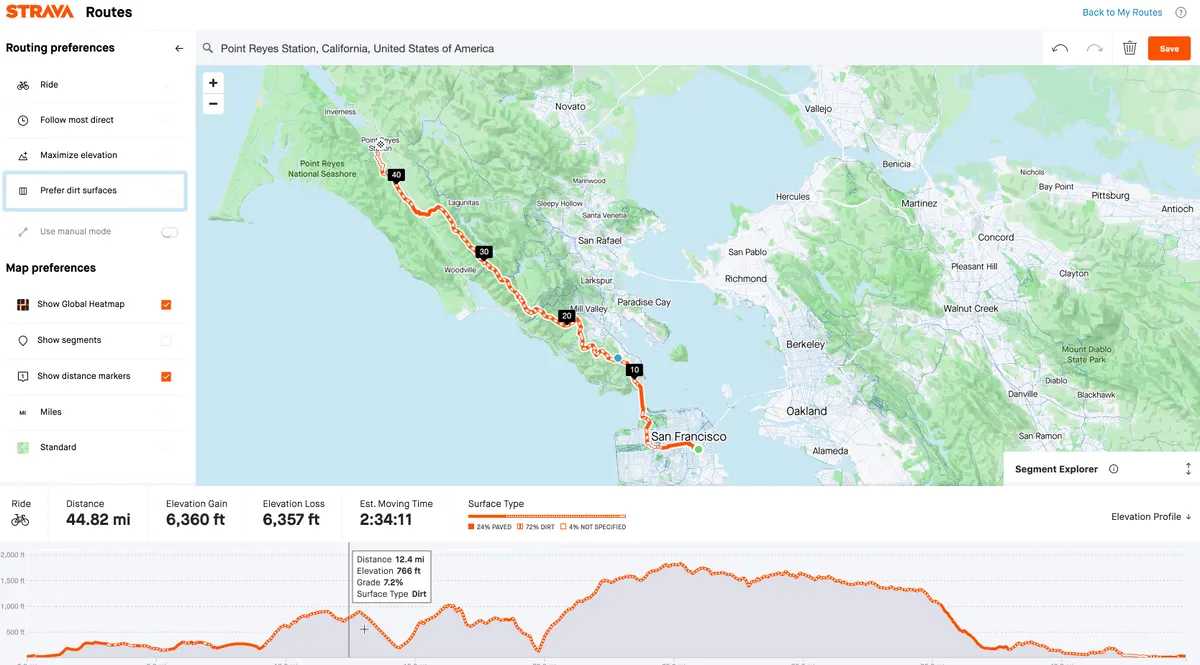Strava’s segment leaderboards and route builder will no longer be available for free, with the social-fitness platform shifting focus to a subscription model that will see future feature development centred on paying users.
Strava has long had a subscription option, though this has primarily offered training analysis and a handful of added extras. Now, however, Strava is stripping back its free service and making a number of core features available to subscribers only, with immediate effect.
Free users will no longer be able to view full segment leaderboards, analyse efforts, create routes or view route recommendations.
Strava's subscription offering has also been simplified – Summit is no more, having been quietly discontinued earlier this year – and costs £47.99 / $59.99 for a 12-month subscription or £6.99 / £7.99 if paying monthly.
Existing users will be offered a 60-day free trial from today, but you will need to sign-up and enter card details. This trial is only available to Strava users currently on the free service.
Alongside this announcement, Strava has also released a range of new features for subscribers, including a revamped route builder for desktop that now incorporates many of the features first made available on mobile, as well an updated training dashboard.
- Best cycling apps | iPhone and Android apps to download
- The best indoor cycling apps compared: which training app should you use?
- Strava StatMaps are the all-new way to visualise your activities
Which Strava features are no longer available for free?
- Full segment leaderboards
- Segment effort analysis and results comparison
- Route builder
- Route recommendations
Why is Strava focusing on subscriptions?
Encouraging more users to pay for a Strava subscription will, according to co-founders Mark Gainey and Michael Horvath, fund future product development and, crucially, provide a route for the company, founded in 2009, to become profitable.
“This focus on subscription ensures that Strava can serve athletes decades from now, and in an up-front way that honors the support of the athletes we serve today,” write Gainey and Horvath in an open letter to Strava users, published in full at the end of this article.
“We plan to take what we earn from these changes and reinvest straight back into building more and better features – not devising ways to fill up your feed with ads or sell your personal information. We simply want to make a product so good that you’re happy to pay for it.”
Gainey and Horvath say “the free version of Strava must remain high quality and useful” but “we think that $5 a month for Strava is money well spent”.
How will this announcement impact existing Strava members, whether free users or subscribers? There’s a lot to cover here, so let’s get into the details.
What does this mean for Strava segments and leaderboards?
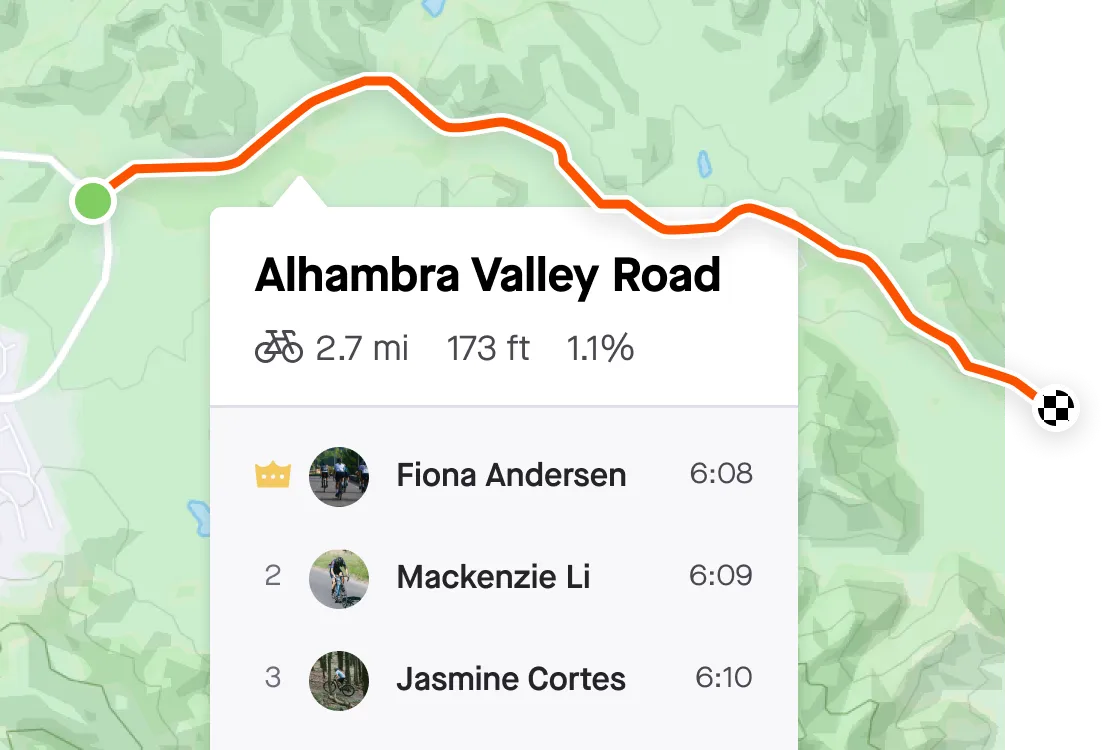
For many users, segments are one of the main draws of Strava, enabling riders to seek out new roads and trails, compare previous efforts on a particular segment, and compete with friends and the entire Strava community on leaderboards.
However, segment leaderboards are “especially complex and expensive to maintain”, according to Strava.
Free members will still be able to create new segments, search for segments and view a segment’s top ten, but analysing results, viewing full leaderboards or checking your position on a segment will only be available to subscribers.
To be clear, free members' efforts (both historic and future) will still feature on leaderboards, but you won't be able to view exactly where you lie in the rankings unless it's in the top ten.
All existing achievements still stand and future achievements, KOMs and QOMs will be awarded regardless of your subscription status.
Available to subscribers
- Full segment leaderboards
- Analyse segment efforts
- Compare your results
- Analyse your efforts
Available to free members
- Top ten all-time and top ten women
- Create new segments
- Segment details (distance, gradient, elevation etc)
- Segment Explore (view popular segments in a given area)
- Flagging segments
- Activity achievements (KOM/QOMs, course records, personal records)
What about routes? Can I still access routes for free on Strava?

Strava’s route builder is also moving behind a paywall. You can still view previously saved routes or save others users’ routes for free, but creating new routes and editing existing routes now requires a subscription.
Subscribers will, however, get a completely revamped route builder that makes many of the features first released on mobile in March available on desktop.
What's new on Strava's route builder?
New features on Strava's revamped desktop route builder include:
- Updated Mapbox base map
- Ability to view surface type along route, on elevation profile and as a percentage of entire route
- Elevation and surface type filters
- Search for location and add as waypoint
- Add heat map and Segment Explore as map layers
The new desktop route builder has the same updated base map as the mobile app, which includes trail names, elevation contours and other information better-suited to the needs of cyclists (and runners), as opposed to motorists.
The updated builder also allows users to select surface type and elevation preferences when creating a route, if you want to seek out a particular type of terrain (paved or dirt) or minimise/maximise the amount of climbing.
Similar to Komoot, you can view details of surface type along a route or on an elevation profile, with a solid line to indicate a paved surface, dashed line for dirt and white line for unspecified. You can also see the same information as a percentage of the entire route.
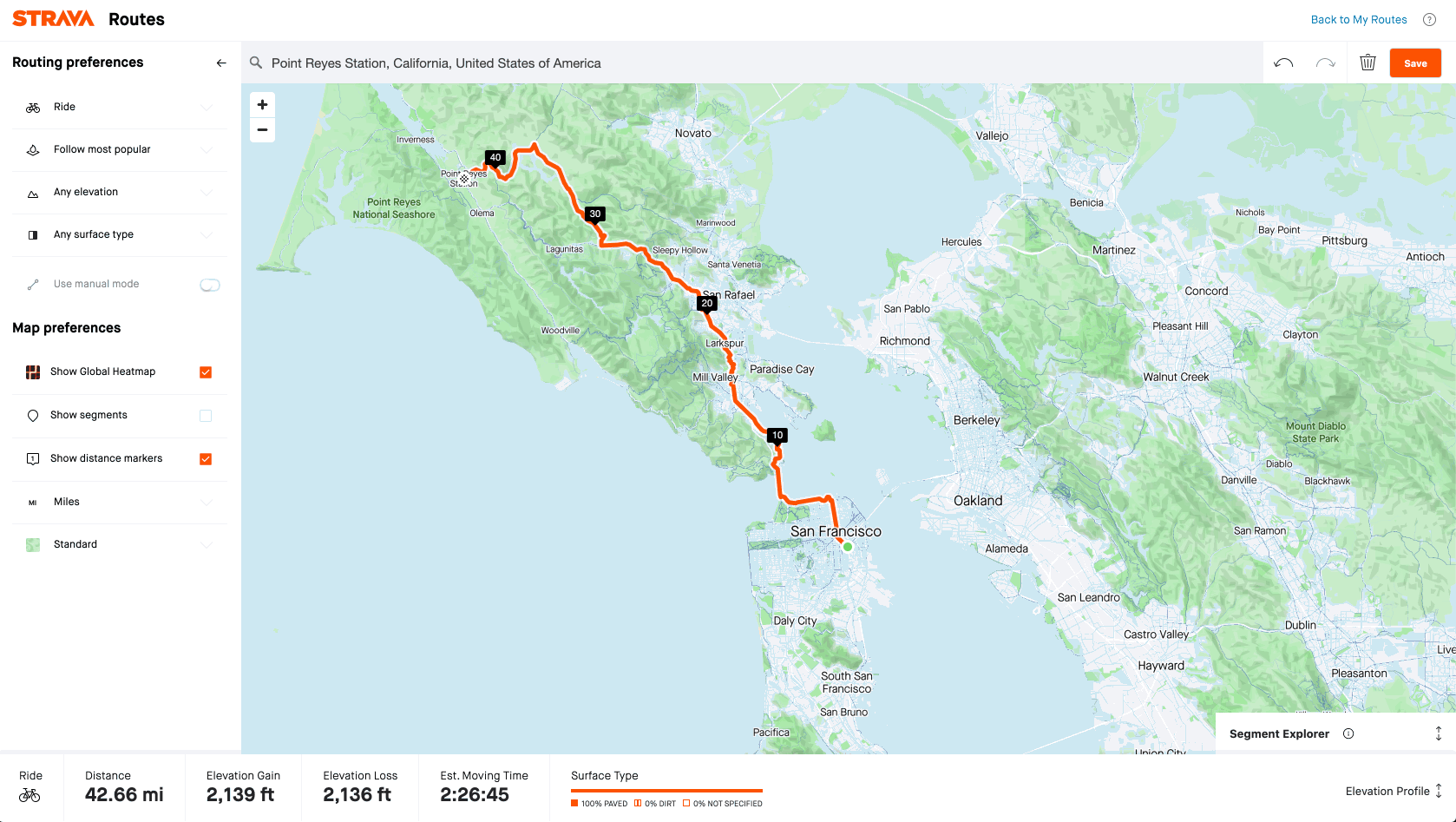
You can't get any more granular than that, however. For example, if you want to understand whether a particular dirt section constitutes gravel or mountain bike territory, you'll need to look beyond Strava.
Other new features include the ability to search for a specific location and add it as a waypoint, with Strava then doing the rest to get you there.
Strava’s Segment Explore feature is now also part of the route builder, allowing you to scope out popular segments in a given area while building a ride. Want to plan a route around all the climbs in your area? Get stuck in.
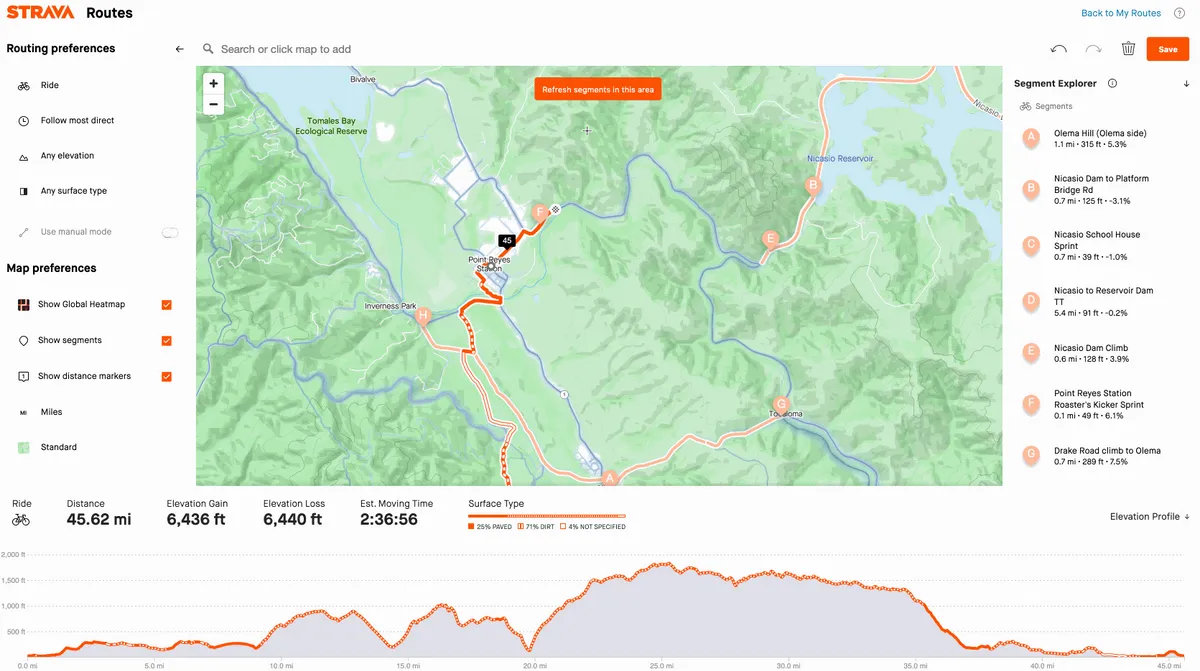
You can still overlay a heat map, with the option to switch between heat map recommendations and the most direct route when adding waypoints. Strava’s heat map, if you’re not familiar, shows the popularity of roads and trails ridden, according to data from more than three billion activity uploads.
Surface type is pulled through via open-source data from OpenStreetMap and combined with data from uploaded activities – that, Strava says, increases surface type coverage on its maps from approximately 30 per cent to around 70 per cent.
Meanwhile, route recommendations are now also available on desktop, having been first released on mobile.
These recommendations use existing Strava data to suggest routes based either on your current location or a location of your choice – useful if, say, planning a ride in a new area. You can customise suggested routes by length, elevation and surface type.
Running and, as a new addition, walking routes are also available.
BikeRadar’s take | A bold move, but an inevitable one
No doubt about it, this is a bold move by Strava, but not one that is entirely unexpected.
When Strava’s PR representatives got in touch with BikeRadar to arrange a call with the company’s co-founder, Michael Horvath, we sensed something was afoot in San Francisco.
Strava has always given its best features (and unique features, at that) away for free on a platform that is generally reliable, intuitive and remarkably free of advertising or other commercial distractions. That comes at a cost – but, until now, Strava has sunk that cost.
Strava has previously struggled to make its subscription model stick, first launching with Strava Premium and replacing that with Strava Summit (and three subscription sub-packages) in 2018, before quietly reverting to a simplified model with one fee ahead of this announcement.
Moving Strava’s core features behind a paywall in one fell swoop will undoubtedly cause a stir on a platform that now has more than 55 million users.
Asking long-established members to open their wallets for features that have previously been free – some since Strava was launched in 2009 – is no easy task. How many of those 55m users count segment leaderboards (and, to a lesser degree given its availability elsewhere, route planning) as central to the Strava experience?
Subscriptions are now a part of everyday life but what’s refreshing here is Strava’s upfront approach to asking its users to set up another direct debit.
"We’re building Strava for the very long run,” Horvath told BikeRadar. “We want it to be a source of motivation and fun for athletes for generations to come. It’s time for us to look at what will make that possible. These changes haven’t been made quickly or haphazardly, they’re done with that goal in mind.
"We’re actually a small company – 180 people – with a big community,” continued Horvath, who returned to run Strava with co-founder Mark Gainey in November 2019 after a two year hiatus. “We’re 11 years old but not yet profitable. It’s time for us to become a company that can sustain itself.”
That, Horvath says, will fund product development for subscribers – “a year ago, 20 per cent of our workforce was focused on subscribers, now that’s closer to 100 per cent” – but first Strava needs its users to cough up.
Are there any changes to Strava’s training features?
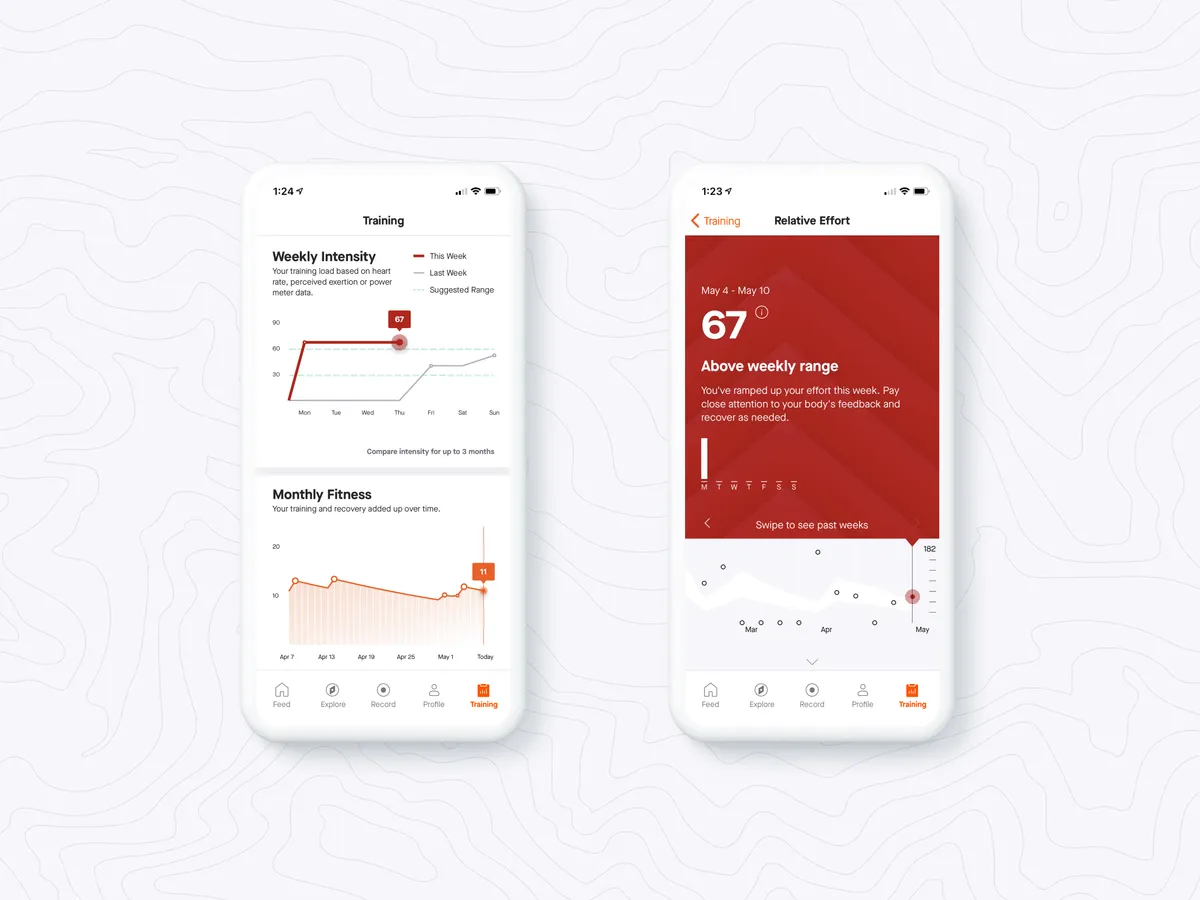
With Strava’s advanced training tools previously only available to subscribers, not a huge amount has changed here, though Strava has made a few tweaks to the interface to provide an improved view of your overall training and training progression.
The Summit tab has been replaced by Training in the Strava mobile app and consists of four 'modules': weekly activities, training log, weekly intensity and monthly fitness.

The training log now shows 32 sport types, having been previously limited to cycling, running and swimming, and can be filtered according to sport type, time, distance, and elevation. Commutes can also be filtered out if you want to focus on training rides
To recap on weekly intensity and monthly fitness; the former estimates your training load accumulated through the week based on heart rate, perceived exertion or power meter data, while the latter assigns a score to your current fitness and compares that to where your fitness has been over the past month, three months, six months, year and two years.
Strava's analytical tools aren't as advanced as what you'll see in the likes of TrainingPeaks and Golden Cheetah but they do offer a window into the world of training analysis for riders who also value the competition and exploration on offer through segments and route planning.
What else is new?
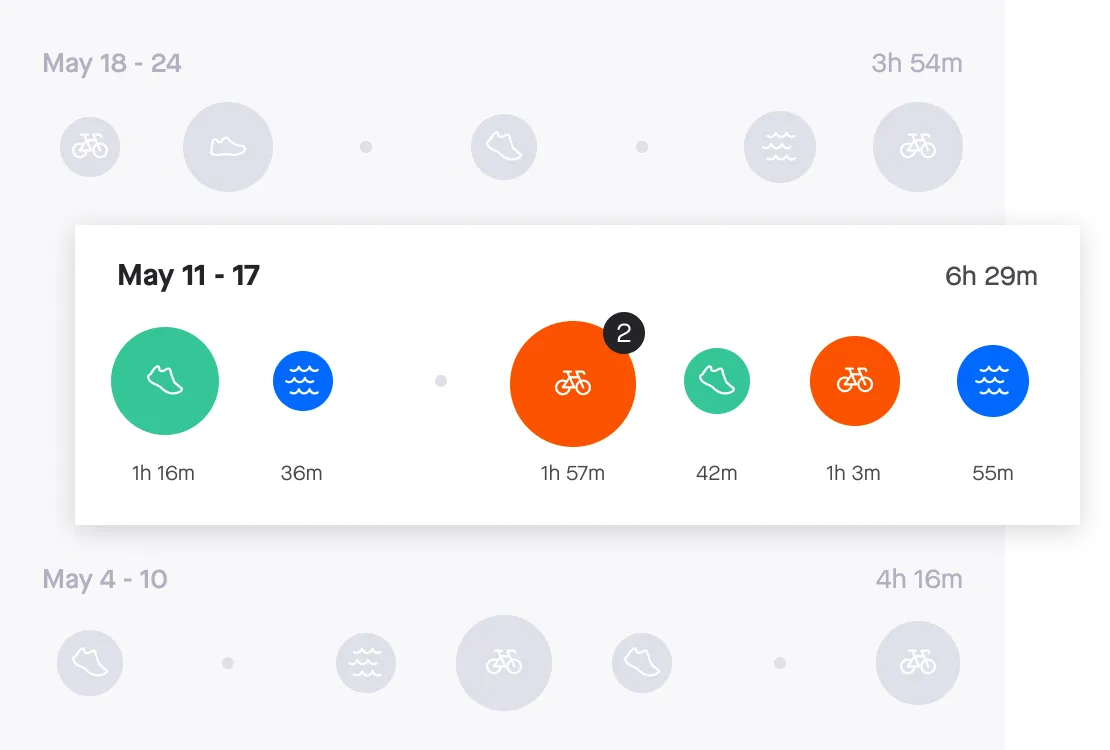
It’s been a busy year for Strava (the company says it has released more than 50 improvements or new features), so it’s also worth recapping on what else we’ve seen so far in 2020.
One of the most significant announcements – if not a completely new feature – was the option to view the activity feed in chronological order, having previously switched to an algorithmic feed. This, according to Strava, was one of its “most popular community requests”.
This release also came with the option to 'favourite' athletes, so you can see their activities at the top of the feed (and receive notifications), as well as Apple Watch integration and an improved auto-flagging algorithm.
Strava also released personalised routes on mobile in March, though that is now only available to subscribers.
This was followed last week by a new Connect Courses API that enables the automatic syncing of Strava Routes to Garmin devices.
On that note, Strava says the API for Strava segments and leaderboards is only available to “trusted partners” such as Garmin and Wahoo, for features that “add value for subscribers”, namely Strava Live segments.

Letter from Strava’s founders, Mark Gainey and Michael Horvath
Dear Strava community,
If nothing else, 2020 has been a year of regaining perspective. A silver lining of hard times like these is that they inspire introspection and focus – What matters the most to us? And how do we live up to that?
Our answers to those questions have only gotten clearer in the past few months, and we’re now leading the company with a single purpose: rededicating Strava to our community.
We’re obsessing over our athletes – over you – and no one else.
Strava athletes deserve an affordable and constantly improving experience, and we hope you’ve noticed how focused we’ve been this year on delivering that. Our small but mighty team of 180 has released 51 athlete-facing improvements already in 2020, from Apple Watch syncing, to new maps and metrics for snowsports, to a huge update to our Routes features, and a lot more.
We’ve also removed some distractions, such as Sponsored Integrations (the closest we’ve ever come to putting ads in the feed). And we returned the option to sort your feed in chronological order. We heard how much that change drove you nuts, and admit it took a really long time to respond.
Dedicating Strava to the community is also a commitment to longevity. We are not yet a profitable company and need to become one in order to serve you better. And we have to go about it the right way – honest, transparent and respectful to our athletes.
Our plan puts subscription at the center of Strava.
This means that, starting today, a few of our free features that are especially complex and expensive to maintain, like segment leaderboards, will become subscription features. And from now on, more of our new feature development will be for subscribers – we’ll invest the most in the athletes who have invested in us. We’ve also made subscription more straightforward by removing packs and the brand of Summit. You can now use Strava for free or subscribe, simple.
This focus on subscription ensures that Strava can serve athletes decades from now, and in an up-front way that honors the support of the athletes we serve today. We plan to take what we earn from these changes and reinvest straight back into building more and better features – not devising ways to fill up your feed with ads or sell your personal information. We simply want to make a product so good that you’re happy to pay for it.
We think that $5 a month for Strava is money well spent. But we also know, especially lately, that there are athletes struggling to make ends meet and that the free version of Strava must remain high quality and useful. Rest assured that we will always offer a version of Strava for free, and you belong in this community whether you subscribe or not. We’re betting all our chips on you, either way. We hope you’ll bet on us.
We are beyond grateful for your business and your support, and thrilled to recommit ourselves entirely to you, our fellow athletes.
See you out there,
Mark and Michael
